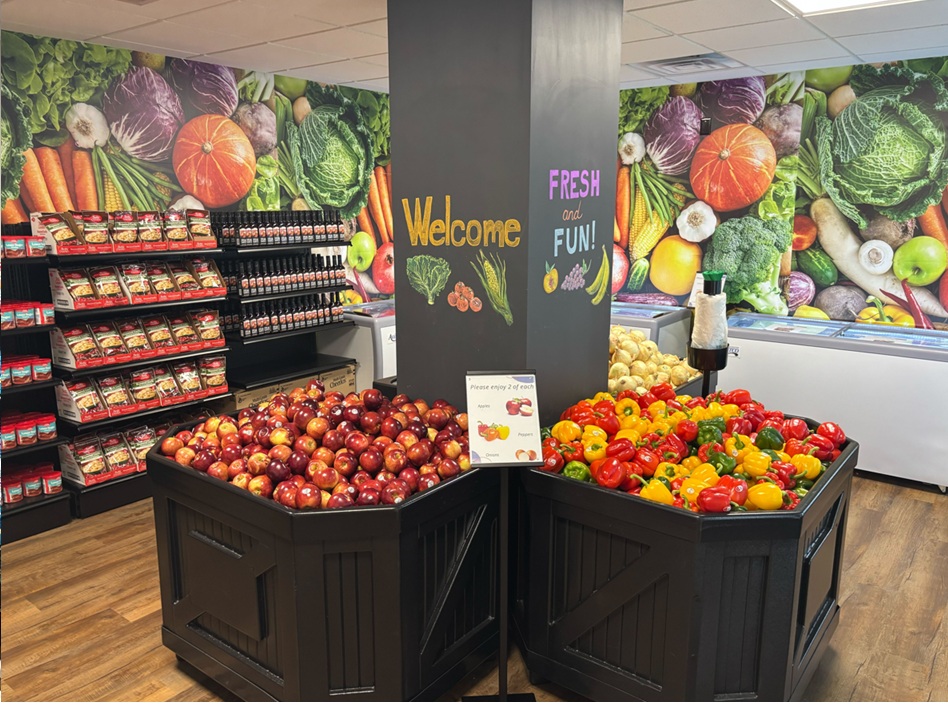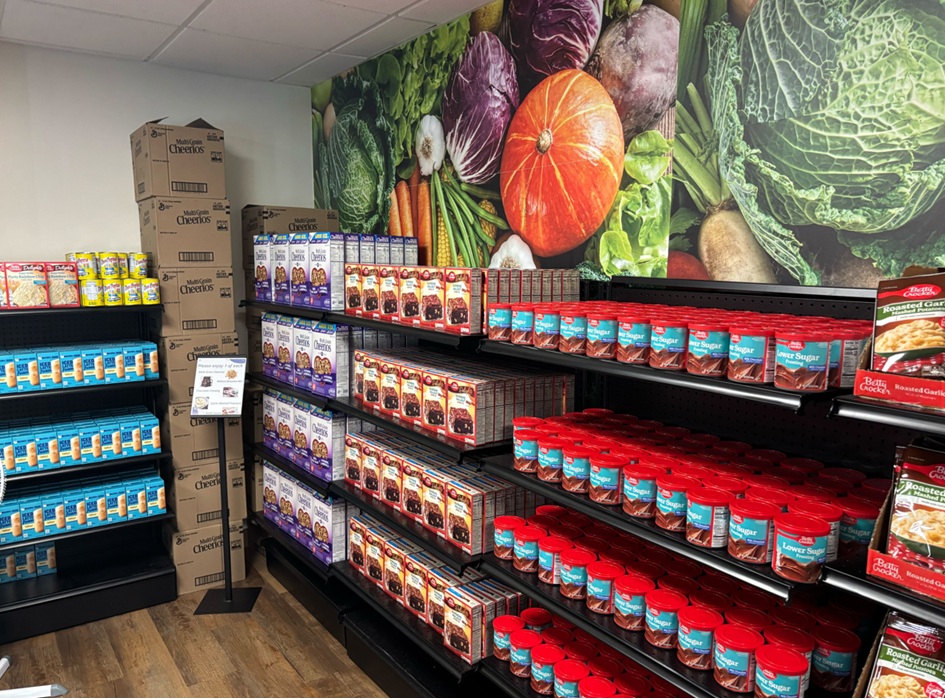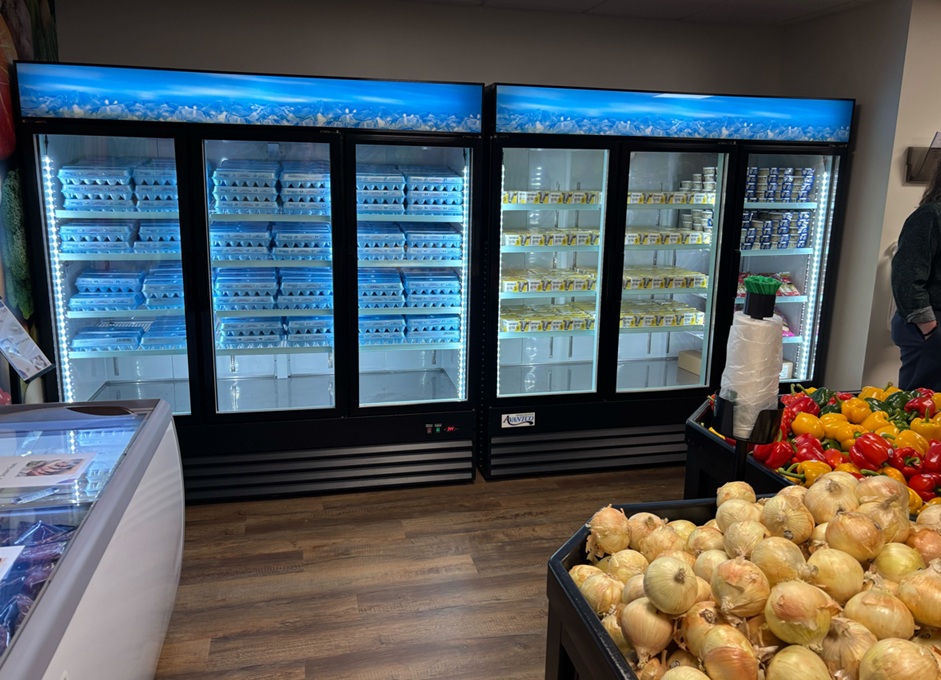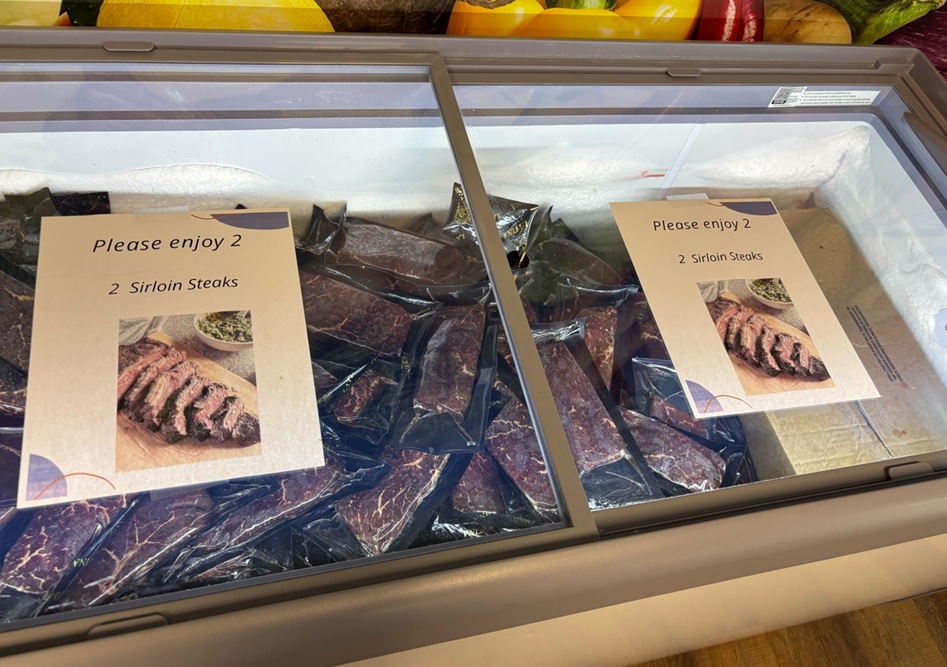
When Jewish Home of Rochester opened the doors to its new employee grocery store, it wasn’t simply about stocking shelves with food, it was about restoring dignity, reducing stress, and strengthening community. Designed to look and feel like a traditional grocery store, the space is reserved exclusively for employees who qualify based on income guidelines, offering them a private, welcoming place to access healthy, high-quality groceries at no cost.
The store is open twice a month and allows qualifying employees to fill two reusable tote bags per visit with essentials like fresh produce, meat, dairy, and staples. It’s not a food pantry, it’s a dignified extension of the organization’s values and an innovative approach to workforce support.
Jewish Home President & CEO Mike King and Jewish Home Foundation Executive Director Tom McDade Clay see the store as more than a charitable gesture, it’s a strategic investment in employee well-being, recruitment, and retention. “We’re not solving food insecurity,” said Tom. “But we are taking a bite out of it. And if you can do something, you’re morally obligated to do something.”

We sat down with Mike and Tom to learn more about the store’s design, its impact, and how other organizations might follow suit.
WHAT INSPIRED YOU TO OPEN AN EMPLOYEE GROCERY STORE?
We learned about a similar program from a partner organization in Boston through the Association of Jewish Aging Services (AJAS). It got us thinking – what could we do to support employees who are food insecure? In our industry, many frontline workers are in lower wage bands. Even if salaries were higher, those dollars often go toward housing or transportation. Food insecurity remains. We saw an opportunity to help, even if we couldn’t solve the entire problem.
HOW DID YOU ENSURE THE STORE FELT DIGNIFIED AND WELCOMING?
From day one, we intentionally called it a grocery store, not a pantry or cupboard. We wanted to create a space that felt like any other neighborhood market. It’s tucked in a private area near the cafeteria and HR, places employees already frequent, so it feels comfortable. The design mirrors a real store with freezers, shelves, branded grocery totes instead of plastic bags, and feedback from employees about what products they want and how things are displayed.

WHO IS ELIGIBLE TO SHOP AT THE STORE, AND HOW DO YOU MANAGE ACCESS?
Eligibility is based on income, aligned with adapted federal poverty guidelines. Qualified employees receive a card, which they show each visit. We have someone stationed there, not just to check cards, but to act as a retention specialist, helping connect staff with other resources and support. It’s not meant to be intrusive, it’s about care and connection.
HOW IS THE STORE FUNDED AND STOCKED?
We have a relationship with a food distributor who provides us with healthy, affordable products through philanthropic pricing. On the funding side, we’ve received grants and individual donations. Some donors continue to give to our general fund and also see the grocery store as an additional way to help—”I can’t solve food insecurity, but I can buy a bag of groceries.” It’s a compelling message that resonates.
WHAT ADVICE WOULD YOU GIVE OTHER ORGANIZATIONS CONSIDERING SOMETHING SIMILAR?
Don’t overthink it. You’re not trying to end food insecurity, you’re doing what you can. If you can open once a month, do that. If you can do more, great. Just be intentional, make it sustainable, and focus on the dignity of those you’re serving. The ripple effect is real—less stress for employees leads to better care for residents, and that’s a win all around.




